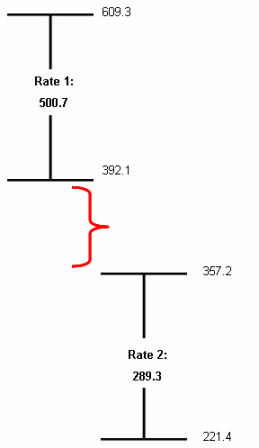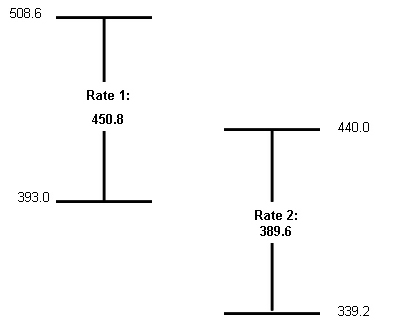Current Suspected Overdose Deaths in Delaware for 2025: Get Help Now!
Find school water testing results and additional resources
Attention Medicaid Participants: Eligibility Renewals Restarted April 1, 2023
Interpretive Guidance: "Cancer Rates by Census Tract"
Before you proceed, below is some guidance to help you understand the information presented.
Summary
Index to the "Cancer Rates by Census Tract" maps and table .
More Detail
Analysis of disease rates for small areas, such as census tracts, is difficult to interpret and can be misleading if not considered carefully. The following information is presented to help interpret the information on “Cancer Rates by Census Tract.”
To understand cancer in Delaware, researchers need to track the number of all newly diagnosed cancer cases each year. Researchers use different types of information to calculate cancer rates. This information includes estimates of the number of people living in Delaware and data on the cancer cases diagnosed in our state.
Even though researchers calculate cancer rates using the best possible information, cancer rates still have some amount of uncertainty. The rate of any disease in a population provides a snapshot of the impact of that disease for a specific time period. Because Delaware is a small state, we have a special problem when we try to interpret this snapshot.
In a small group, such as a census tract, the snapshot changes a lot from year to year. If one case of cancer is diagnosed in a census tract one year, and three cases of cancer are diagnosed in the same census tract the next year, the cancer rate for that census tract will change dramatically from one year to the next. These big fluctuations do not typically occur in larger populations. If we compare the cancer rate for a census tract to the cancer rate for the whole state of Delaware for a given year, it would not be unusual to find the comparison different (perhaps even reversed) the following year. In Delaware, we publish 5-year cancer rates (for example, 2001-2005) to allow for better understanding of cancer patterns among small populations. Cancer rates for 5-year time periods are less vulnerable to the yearly fluctuations of cancer cases diagnosed in small populations.
We can tell how much uncertainty there is in cancer rate by looking at its confidence interval.
A confidence interval is a range of values that shows where the cancer rate could reasonably be. This means that the cancer rate could be anywhere between the lower confidence limit and the upper confidence limit.
If the difference between the upper confidence limit and lower confidence limit is big, there is a lot of uncertainty in the cancer rate. If the difference between the upper confidence limit and lower confidence limit is very small, there is not much uncertainty in the cancer rate at all.
The width of a confidence interval depends on two things: (a) the number of people living in that area and (b) the number of cancer cases diagnosed in that area.
When a cancer rate is calculated for a small area (like a census tract or a neighborhood block), usually a small number of people live in that area. An even smaller number of people in that area will have been diagnosed with cancer. When a cancer rate is calculated for a small area, the cancer rate has a lot of uncertainty because researchers do not have very much information to work with. Cancer rates for small areas will probably have very wide confidence intervals.
On the other hand, when a cancer rate is calculated for a very large area (like a state or a country), many people live in that area. The odds are that in such a large area, more people will have been diagnosed with cancer compared to a smaller area. When a cancer rate is calculated for a large area, researchers are more certain of the level of cancer in that area. This means that cancer rates for large areas will usually have very narrow confidence intervals.
Confidence intervals are important for another reason, too. They help researchers figure out if differences in cancer rates for two different areas are statistically significant. If the confidence interval for the incidence rate in one area does NOT overlap with the confidence interval for an incidence rate in another area, the two rates are significantly different. The figure below shows what non-overlapping confidence intervals look like.
If “Rate 1” is significantly higher than “Rate 2,” the lower confidence limit for “Rate 1” is greater than the upper confidence limit for “Rate 2”. When one rate is significantly different from another rate, the difference between the two rates is larger than we would expect by chance alone.

On the other hand, if the confidence interval for the incidence rate in one area overlaps with the confidence interval for an incidence rate in another area, the two rates are NOT significantly different. The figure below shows how the confidence intervals look when the cancer rates for two areas are NOT significantly different from one another.

If “Rate 1” is NOT significantly greater than “Rate 2”, the lower confidence limit for “Rate 1” is less than the upper confidence limit for “Rate 2”. Even though the numbers may look very different, if the cancer rate for one area is not significantly different from the cancer rate for another area, researchers cannot say that one rate is truly different from the other rate.
The Division of Public Health compared cancer rates for census tracts to the cancer rate for the state of Delaware. This means that we were able to tell if any census tracts had a higher-than-expected or lower-than-expected overall cancer rate compared to the whole state.
About the Contents of "Cancer Rates by Census Tract"
To help you interpret the cancer rates for any census tract, we are providing maps, plus a table that lists the actual rate and the confidence intervals for both the state as a whole and for each census tract. When you look at the cancer rate for your census tract, it is important to look at the confidence interval. If a cancer rate has a very wide confidence interval, the cancer rate has a lot of uncertainty. When cancer rates have a lot of uncertainty, you should draw conclusions cautiously, keeping in mind that even our best guess may over-estimate or under-estimate the actual rate of cancer in a census tract.
More information about how the cancer rates were developed can be found in the methodology section, see link below.
In you are concerned about cancer in your census tract or neighborhood, please read our page about cancer clusters .
You can read more about the cancer cluster investigations that the Division of Public Health has done. You may also call the Division of Public Health to discuss your concerns with us.
Link to U.S. Census: How To Determine Your Census Tract
![]() Please note: Some of the files available on this page are in Adobe PDF format which requires Adobe Acrobat Reader. A free copy of Adobe Acrobat Reader can be downloaded directly from Adobe . If you are using an assistive technology unable to read Adobe PDF, please either view the corresponding text only version (if available) or visit Adobe's Accessibility Tools page.
Please note: Some of the files available on this page are in Adobe PDF format which requires Adobe Acrobat Reader. A free copy of Adobe Acrobat Reader can be downloaded directly from Adobe . If you are using an assistive technology unable to read Adobe PDF, please either view the corresponding text only version (if available) or visit Adobe's Accessibility Tools page.